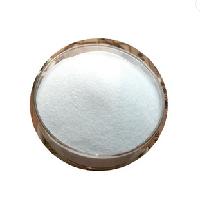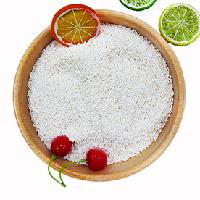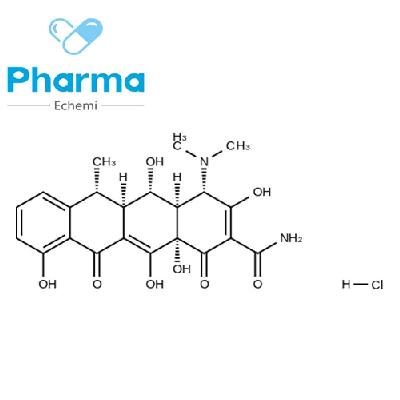-
Categories
-
Pharmaceutical Intermediates
-
Active Pharmaceutical Ingredients
-
Food Additives
- Industrial Coatings
- Agrochemicals
- Dyes and Pigments
- Surfactant
- Flavors and Fragrances
- Chemical Reagents
- Catalyst and Auxiliary
- Natural Products
- Inorganic Chemistry
-
Organic Chemistry
-
Biochemical Engineering
- Analytical Chemistry
-
Cosmetic Ingredient
- Water Treatment Chemical
-
Pharmaceutical Intermediates
Promotion
ECHEMI Mall
Wholesale
Weekly Price
Exhibition
News
-
Trade Service
The propylene industry has experienced the peak of capacity expansion from 2014 to 2016 and a short-term backwardness in 2017.
2019 will usher in a new historical high in propylene production capacity in recent years, with an expected increase of 5.
86 million tons/year.
However, the growth rate of propylene demand is slower than that of production capacity, and the self-sufficiency rate will rise again.
Domestic propylene capacity will catch up with the equivalent consumption, or it may face a situation of overcapacity.
China's propylene production capacity has expanded rapidly in recent years, and all routes of propylene production have added new capacity.
Propane dehydrogenation (PDH) and coal-to-olefin (CTO) have increased their production capacity significantly by leveraging their cost advantages.
In addition to the new capacity of the PDH route, the coal-to-olefin (CTO) route is also picking up, and its new capacity in 2019 is at a high level over the years.
Affected by factors such as rising international crude oil prices, China's CTOs are booming, especially in the western region where coal resources are abundant.
Four major CTO industrial bases have been formed in Ordos, Shaanxi, Ningdong, Ningxia, and Zhundong, Xinjiang.
As of the end of 2018, the production capacity of the CTO plant was approximately 4.
8 million tons per year.
In 2019, with the commissioning of the three projects of Jiutai Energy, Zhong'an United Coal Chemical Industry, and Ningxia Baofeng, an additional propylene production capacity of 900,000 tons/year will be added.
At the same time, the newly added propylene production capacity of emerging refining and chemical companies cannot be ignored.
Stimulated by a series of reform dividends such as the liberalization of crude oil imports and the decentralization of approval authority, emerging refining and chemical companies have obtained bond financing, equity financing and other capital operations through banks, opening up capital channels.
In 2019, China welcomes large-scale refining and chemical integration projects such as Zhejiang Petrochemical and Bora Group to be put into operation one after another.
It is expected that a total of 1.
9 million tons of propylene production capacity will be released in a concentrated manner.
It should be noted that although propylene equivalent consumption increased steadily in 2019, the growth rate continued to slow down.
Polypropylene, propylene oxide and acrylonitrile were the three faster-growing downstream products, and the proportion of the structure increased slightly; acetone and acrylonitrile The proportion of acrylic acid remained the same as in 2017; the proportion of butanol decreased slightly.
According to reports, in 2018, China's propylene production capacity was 34.
83 million tons/year, and the output reached 31.
4 million tons, an increase of 5.
5% and 9.
2% respectively over 2017; the equivalent consumption was 40.
1 million tons, an increase of 7% over the previous year.
It is estimated that the propylene production capacity will reach 41.
73 million tons/year in 2019, and the output will be 34 million tons, an increase of 19% and 8.
3% respectively over the previous year; the equivalent consumption will reach 42.
1 million tons, and the growth rate will continue to slow to 5%.
Data show that China's propylene supply may face a pattern of overcapacity.
2019 will usher in a new historical high in propylene production capacity in recent years, with an expected increase of 5.
86 million tons/year.
However, the growth rate of propylene demand is slower than that of production capacity, and the self-sufficiency rate will rise again.
Domestic propylene capacity will catch up with the equivalent consumption, or it may face a situation of overcapacity.
China's propylene production capacity has expanded rapidly in recent years, and all routes of propylene production have added new capacity.
Propane dehydrogenation (PDH) and coal-to-olefin (CTO) have increased their production capacity significantly by leveraging their cost advantages.
In addition to the new capacity of the PDH route, the coal-to-olefin (CTO) route is also picking up, and its new capacity in 2019 is at a high level over the years.
Affected by factors such as rising international crude oil prices, China's CTOs are booming, especially in the western region where coal resources are abundant.
Four major CTO industrial bases have been formed in Ordos, Shaanxi, Ningdong, Ningxia, and Zhundong, Xinjiang.
As of the end of 2018, the production capacity of the CTO plant was approximately 4.
8 million tons per year.
In 2019, with the commissioning of the three projects of Jiutai Energy, Zhong'an United Coal Chemical Industry, and Ningxia Baofeng, an additional propylene production capacity of 900,000 tons/year will be added.
At the same time, the newly added propylene production capacity of emerging refining and chemical companies cannot be ignored.
Stimulated by a series of reform dividends such as the liberalization of crude oil imports and the decentralization of approval authority, emerging refining and chemical companies have obtained bond financing, equity financing and other capital operations through banks, opening up capital channels.
In 2019, China welcomes large-scale refining and chemical integration projects such as Zhejiang Petrochemical and Bora Group to be put into operation one after another.
It is expected that a total of 1.
9 million tons of propylene production capacity will be released in a concentrated manner.
It should be noted that although propylene equivalent consumption increased steadily in 2019, the growth rate continued to slow down.
Polypropylene, propylene oxide and acrylonitrile were the three faster-growing downstream products, and the proportion of the structure increased slightly; acetone and acrylonitrile The proportion of acrylic acid remained the same as in 2017; the proportion of butanol decreased slightly.
According to reports, in 2018, China's propylene production capacity was 34.
83 million tons/year, and the output reached 31.
4 million tons, an increase of 5.
5% and 9.
2% respectively over 2017; the equivalent consumption was 40.
1 million tons, an increase of 7% over the previous year.
It is estimated that the propylene production capacity will reach 41.
73 million tons/year in 2019, and the output will be 34 million tons, an increase of 19% and 8.
3% respectively over the previous year; the equivalent consumption will reach 42.
1 million tons, and the growth rate will continue to slow to 5%.
Data show that China's propylene supply may face a pattern of overcapacity.







